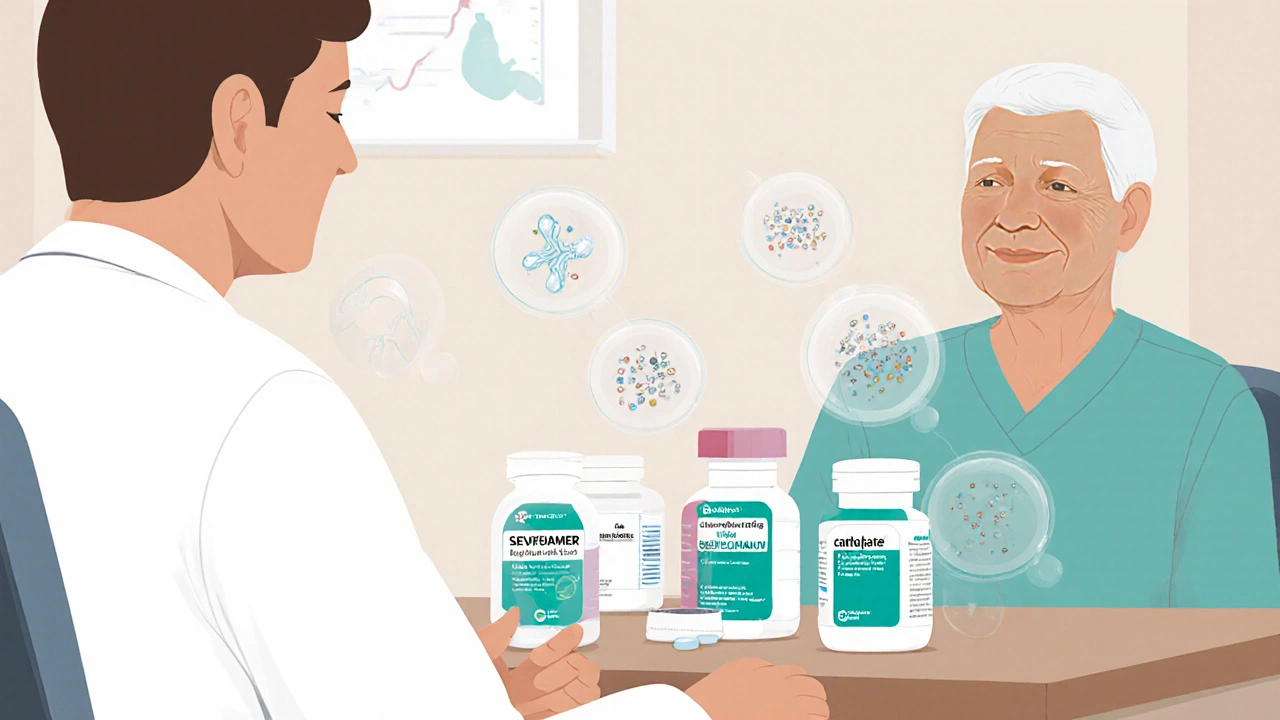Phosphate Binders: What They Are and Why They Matter
When dealing with phosphate binders, medications that attach to dietary phosphate in the gut and prevent its absorption. Also known as phosphate sequestrants, they are a cornerstone for people fighting high blood phosphate levels. Chronic kidney disease, a condition where the kidneys can’t filter waste effectively often leads to hyperphosphatemia, elevated serum phosphate that can damage bones and heart vessels. To keep phosphate in check, doctors prescribe binders like sevelamer, a non‑calcium polymer that traps phosphate without adding extra calcium. These connections form a clear chain: phosphate binders reduce serum phosphate, high phosphate drives complications in chronic kidney disease, and using the right binder can break that cycle.
How Phosphate Binders Work and What to Look For
Phosphate binders act in the digestive tract, binding the mineral from foods so it’s excreted instead of entering the bloodstream. The result is lower serum phosphate, which eases stress on the kidneys and cuts down the risk of vascular calcification. Different binders have unique profiles: calcium‑based binders (like calcium carbonate) add calcium, which can be helpful for bone health but may raise calcium levels too much for some patients. Sevelamer, on the other hand, avoids extra calcium and even helps lower LDL cholesterol. Lanthanum carbonate is another option that works similarly but can be more expensive. Choosing the right binder depends on a patient’s overall mineral balance, cardiovascular risk, and tolerance to side effects. For instance, a person with already high calcium might try sevelamer, while someone needing extra calcium for bone health might benefit from calcium carbonate.
Practical tips matter as much as the drug choice. Take binders with meals—ideally with each bite—to maximize binding efficiency. Watch for gastrointestinal side effects: some binders cause constipation or stomach upset, which can be managed by adjusting dose or switching types. Regular blood tests are essential; doctors track phosphate, calcium, and PTH levels to fine‑tune therapy. Nutrition also plays a role: limiting high‑phosphate foods (like processed meats, sodas, and certain dairy products) works hand‑in‑hand with medication. Understanding these pieces helps patients stay in control of their phosphate levels and avoid complications down the line. Below you’ll find a curated set of articles that dive deeper into specific binders, dosing strategies, and real‑world experiences, giving you actionable insights for managing phosphate in everyday life.


